Milan Material Discoveries
Milan Design Week has an internationally recognised reputation as the go-to event for the latest innovations in furniture, lighting and interior finishes – 60 years of showcasing the world’s leading brands will do that.
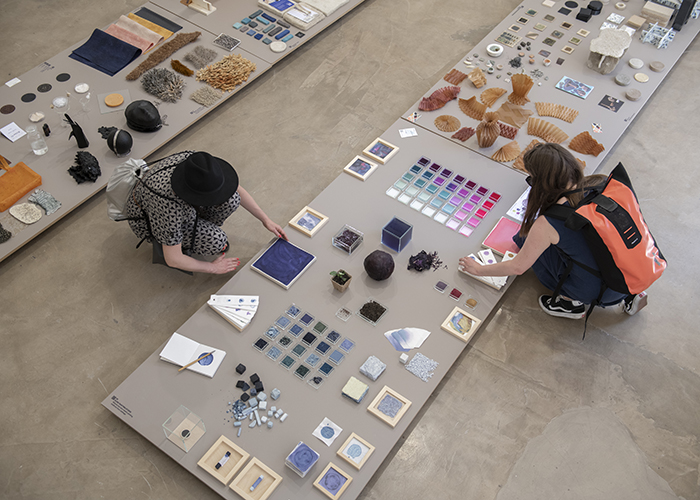
With the event back to its full strength following the 2-year pandemic interruption, crowds once again flocked back to the city to soak up the atmosphere and take in as much as their feet (and brains) would allow. And perhaps more than any other in its rich history, this year visitors found an abundance of exhibitions dedicated to the stuff that ultimately makes the interior solutions that the show is famed for; materials.
Across the week, the majority of events take place within the monumental expo Salone Del Mobile at the Rho Fiera and as part of Furiosalone, which encompasses pretty much everything within the city limits. This year the latter framed events under the banner Between Space and Time and challenged designers, brands and visitors alike to consider how design can respond to the changes that are taking place within the world, with a particular emphasis placed upon sustainability and re-engaging with nature in a positive manner. And with the gauntlet thrown, it was clear that designers and brands were singing from the same hymn sheet when it came to materials.
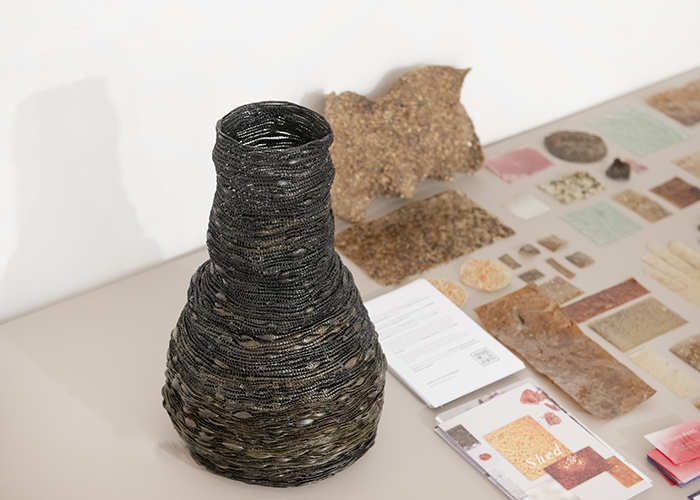
This was no more apparent than in the Isola Design District, which itself operated under the positively-infused theme Together As One. The area bought together 250 emerging international designers and studios across 40 locations, many of which showcased their work in specialist exhibitions such as No Space for Waste. As the title suggests, the focus here was on materials and design products that aim to minimise their environmental impact or that are created from pre-existing indutrial waste. Central Saint Martins graduate Irene Roca Moracia’s project titled Appropriating the Grid, tackles the construction industry itself head on.

Research into how the industry operates highlighted a systematic overproduction of materials, which along with the over-regulation of quality and safety measures, creates an excess that is ultimately discarded by the manufacturer. Recognising the futility and wasteful nature to this system, Roca has discovered legal loopholes that allow her to obtain said materials, which she in turn transforms into sculptural furniture that oozes across a metal framework that evokes an industrial aesthetic. In doing so, the pieces in her collection underline the fact that sustainable practice is as much about operations and behaviour as it is design.
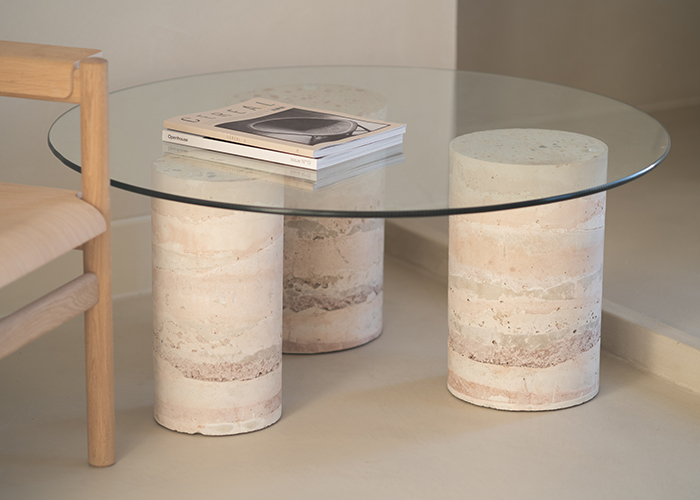
Chilean designer Macarena Torres Puga has also turned her attention to the upcycling of waste created by the construction industry, although more specifically, she utilises materials produced when buildings are deconstructed to make way for the new. Her circular approach involves the reprocessing of two of the most abundant materials extracted from the rubble of building sites; bricks and concrete. In doing so, she creates sleek moulded forms that serve as interior design products, on which the sedimentary layers show each products unique material history.
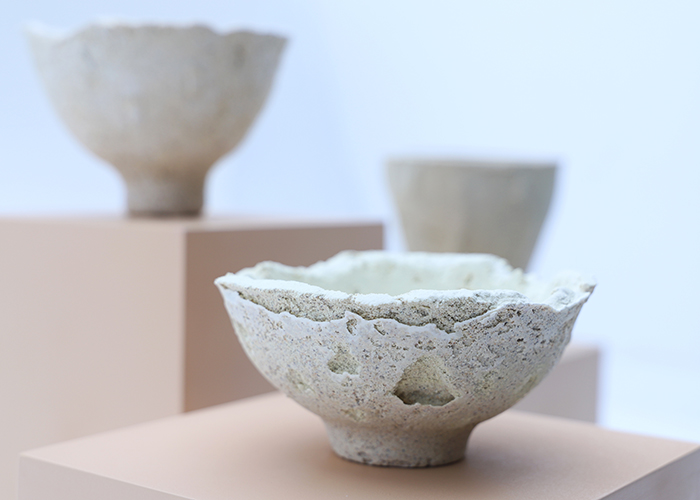
Nicole Chrysikou takes a slightly different approach to transforming superfluous materials in creating her work titled BacTerra. Whilst she uses waste, in this case ceramic, she also involves another novel element to her process with the introduction of soil-born, non-pathogenic bacteria. Recognising that the traditional method of producing ceramics involves energy-heavy kiln firing, Chrysikou applied biotechnological thinking, and discovered that incorporating the bacteria into her glaze created a biomineralisation process that naturally solidifies. The resulting “bioceramics” therefore require no heat energy whilst at the same time, save industrial waste from going into landfill. The same can be said of the equally unique work shown during the Robot Shit exhibition, although as the name suggests, this work makes use of a very different and much newer waste stream; excess 3-D printing scraps. Created collaboratively by DesignWanted, _sucks and Caracol the project draws attention to an until now overlooked, and yet still valuable material resource.
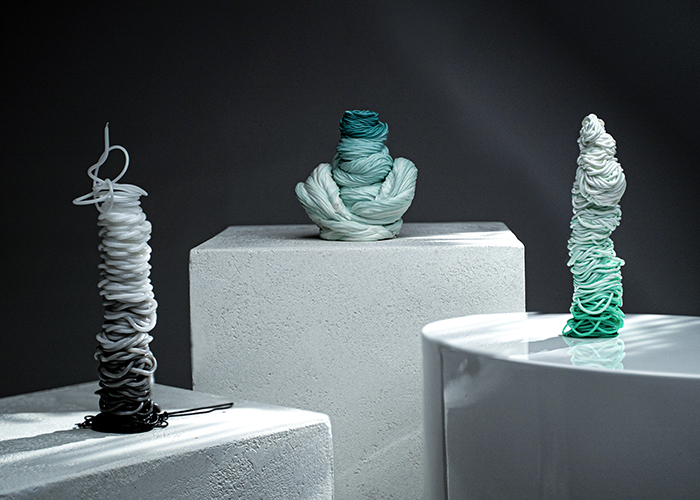
Elsewhere within the Isola Design District, Materialized showcased even more work made from industrial waste and bio-materials. Focusing on material alternatives to plastics and other polluting substances these young talents offer further new material perspectives and possibilities.
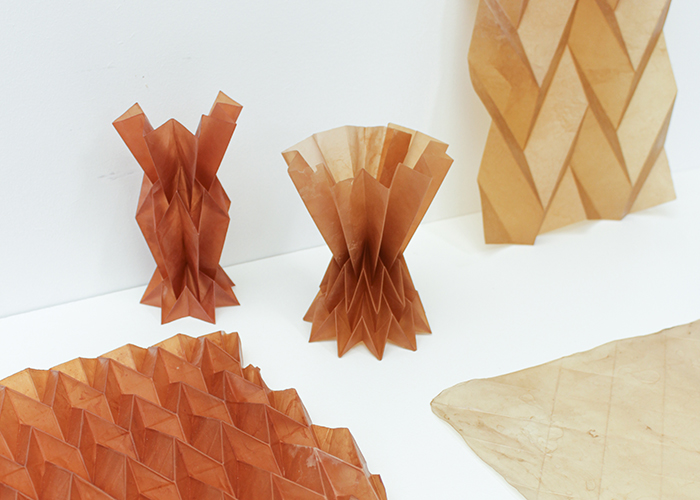
Lionne Van Deursen is concerned with sustainble materials and production processes and deploys microorganisms to grow new surfaces. At the show she exhibited Unfold, a new project that utilises a symbiotic culture of bacteria and yeast to produce a biofilm that becomes rigid when dried. The plastic alternative is not only grown but dyed with natural pigments, and as well as being strong and sturdy, it is also fully formable and biodegradable.
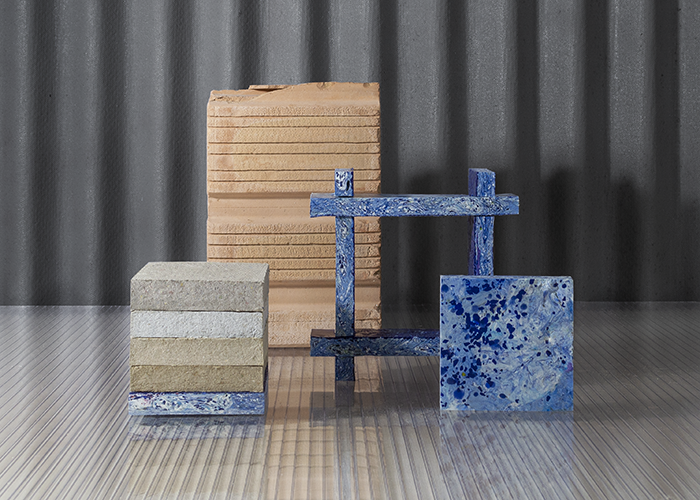
Those properties make it an ideal option for packaging, which is shared by the output of BY THE END OF MAY’s project Post Paper Studio. In recognising that more companies moving from plastic to paper packaging is creating a larger abundance of the latter, the team has set about creating low-tech ways to upcycle paper at a local level. Combining open source tools such as paper presses along with simple recipes including ingridients such as starches, alginate, resins and gums, designers and craftspeople are invited to produce their own new material solutions for their own unique design needs.
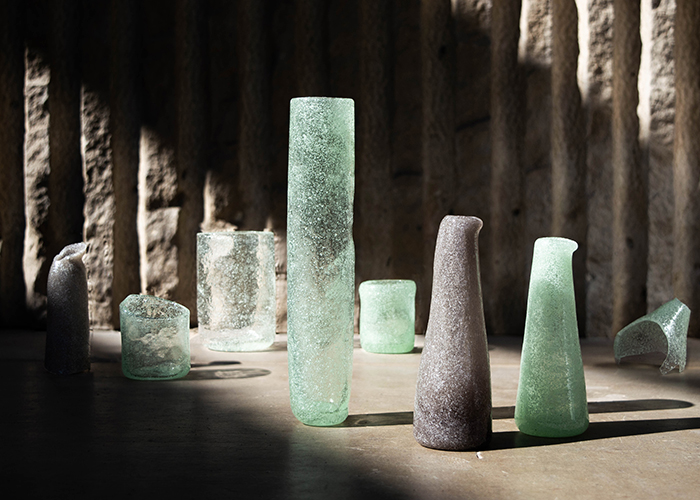
Whilst it may seem safe to assume that glass is one of those materials that is by and large endlessly recyclable and therefore not in need of reform in terms of how it’s made or remade, Studio Peipei’s research and design outcomes points out that there is still room for improvement. For whilst glass is predominantly derived from sand, there are two further key ingredients that come with their modern day issues; Sodium Carbonate and Calcium Carbonate. The former is extracted from salt lakes that are rapidly in decline as a result fo the effects of climate change, whilst Calcium Carbonate, the core component of Limstone, requires the mining of the rock, which is in itself a finite resource. From the Ashes proposes a new way of breaking this supply chain by using one that is potentially infinite in scope. By extracting the ashes from eve- increasingly common wood-fired pizza ovens and combining it with also abundant shell-shells, they have figured out a way of creating a new type of glass. The products are not beautifully crafted to show their natural imperfections, but also easily produced worldwide and made from entirely renewable materials derived from by-products of the food industry.
Whilst the entire event itself was a welcome return to a more familiar celebration of design, it was also a timely beacon for more sustainable and ecologically sound materials and production processes.




